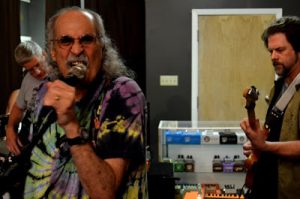The saga begins
Let’s face it: since the early 90’s, Ibanez hasn’t had the best reputation in the guitar industry – but it wasn’t always like that. Ibanez has had its ups and downs over the years, but there is no question that they are a titan in the guitar industry, deserving of a place in the pantheon of musical instrument makers. By producing high quality, affordable instruments for every type of player from beginner to professional, Ibanez has made an indelible mark on the guitar industry, the music scene, and the world.
Ibanez was founded in Japan in 1908 as Hoshino Gakki, a simple sheet music and accessories distributer. Hoshino Gakki got into the guitar business in the late 1920’s, importing ultra-high-end guitars made by the then-famous Spanish guitar maker Salvador Ibanez. By the 1930’s, Hoshino took over the name Ibanez and began making their own guitars – mostly entry-level cheapos that wound up in department stores and catalogs, setting the precedent for later companies like Silvertone and Danelectro.
Still based in Japan to this day, Ibanez has endured more adversity than most companies can survive: two world wars, changing tastes and trends, a slew of economic depressions, earthquakes, tsunamis, and one of the most infamous lawsuits in guitar history.
Lawyers ruin everything
By the 1960’s, Ibanez had gained recognition in the United States by making high-quality copies of popular Fender and Gibson models like the Les Paul and Stratocaster. These Ibanez copies became extremely popular for their professional craftsmanship and inexpensive price tag, but eventually the companies they were ripping off caught on. In the 1970’s, Gibson’s parent company, Norlin, launched the most famous lawsuit in guitar business history, finally settling out of court in 1978. This became known as the Ibanez “Lawsuit Era.”


(photo courtesy of reverb.com)
But all this turmoil didn’t stop Ibanez from enjoying an excellent reputation among well-respected professionals. Paul Stanley (KISS) played an Iceman for much of the 70’s, Jazz legend George Benson and Bob Weir from the Grateful Dead each had their own Ibanez signature models, and Eddie Van Halen is said to have used his own customized “Shark” Destroyer on the first three Van Halen albums (Eddie’s Ibanez “Shark” Destroyer was featured on the cover of the 1980 Van Halen album Women and Children First).

The greatest pedal in the world
While the Ibanez legal department battled Gibson in the courtroom, Ibanez engineers were busy creating what would become the most popular guitar pedal on the planet: the Ibanez Tube Screamer.

Known for its creamy distortion, the Tube Screamer was (and still is) found on pedalboards in every genre. Thanks to its versatility, the Tube Screamer is universally beloved in every genre of modern music. From rock to blues to jazz and everything in between, the Ibanez Tube Screamer remains an industry standard.
Notable Tube Screamer fanatics include Steve Vai, Stevie Ray Vaughn, Kirk Hammett (Metallica), Eric Johnson, John Petrucci (Dream Theater), Carlos Santana, and Trey Anastasio (Phish), just to name a few. The Tube Screamer has seen many updates over the years, but the original 1970’s, made-in-Japan TS808 is considered the Holy Grail of pedals.
Let there be shred
By the time the 80’s rolled around, classic rock was dying out and was being replaced by high-kicking, speed-shredding, hair-spraying metal bands like Racer-X, RATT, Poison, and Motley Crue. The classic Strats and Les Pauls favored by 70’s stadium rockers were collecting dust in pawn shops, and guitarists were looking for something different. This time, Ibanez was the trend-setter, producing some the most iconic guitars of the 1980’s. Affordable models from the RG and S-Series brought performance guitars to the masses, and made Ibanez a household name.

While these less expensive models were being gobbled up by beginner and amateur players, Ibanez also busy handing out endorsements and higher-end models to a slew of professional heavy-hitters like Jennifer Batten (Michael Jackson), Phil Collen (Def Leppard), and Marty Friedman (Megadeth). These endorsements promoted the higher-end premium models, and helped Ibanez gain respect among professionals and more discerning players.
And speaking of discerning players… no history of Ibanez would be complete without mentioning Ibanez’s signature models for the two biggest names in shred: Steve Vai and Joe Satriani. With direct access to Ibanez engineers, Vai and Satriani were given free rein to come up with innovative and exciting features like extended scale 30-fret fingerboards, 7- and 8-string models, onboard high-pass and low-pass filters, gain boosters, new pickup designs, and famous cutout handle featured on the Steve Vai signature JEM guitars. Many of the technical innovations achieved by Ibanez engineers for Vai and Satriani are still found on their respective signature models to this day.

By the end of the 80’s, Ibanez was riding high. Almost every guitar player on the planet had owned an Ibanez at one time or another. Sure, there were higher-end companies like Jackson and Kramer, but Ibanez guitars were iconic and within reach. Even the nicest, most expensive Ibanez rarely fetched a price of over $1000, and you could get a really nice RG or S-Series Ibanez for under $500.
Grunge and the end of an era
Coming out of the 1980’s, Ibanez was riding high. But then, in the early 90’s something happened that would change the guitar world forever: Grunge. Driven by a DIY ethos that harkened back to the punk movement of the 70’s and 80’s, Grunge players rejected the flashy neon spandex 80’s vibe and opted for a sound that was more raw, and a denim-and-flannel look that was more… Grunge-y.
Kurt Cobain played beat up “pawn shop” guitars like the Fender Jazzmaster and Mustang. Pearl Jam used a Strat and a Les Paul to get their signature sound. Kim Thayil from Soundgarden melted faces using a Gibson SG. You know what none of those guys played? Ibanez. By the mid-90’s, no self-respecting “cool” guitar player would be caught dead using a neon dipped Ibanez.

Tides had turned and guitarists were abandoning the guitars that had made Ibanez a household name, but Ibanez wasn’t down for the count. The company scrambled to come up with designs that kept with the vintage-inspired Grunge aesthetic. By the mid-90’s Ibanez had released their Talman and Ghostrider series famously played by Ministry’s Al Jourgenson. But the era of the hair band was over, and the Talmans and Ghostriders, while popular, weren’t as popular as the RG’s and JEMs of the previous decade. Ibanez was treading water.
Nu-Metal and the rebirth of a legend
As dark as the 90’s were for Ibanez, they had enough popularity stored up to carry them through the grunge era. Then, at the dawn of the 2000’s, bands like Korn and Limp Bizkit ushered in a new era of metal, befittingly known as Nu-Metal. Bands were tuning down to drop-D and sweep arpeggios replaced two-handed tapping as the coolest guitar solo technique around. Players were looking for guitars that could keep up with the ultra-low tunings and ear-bleeding solos – and lucky for them, there was already a guitar equipped to do the job: the Ibanez Universe 7- and 8-string models. With extended octave ranges and thin, fast neck profiles, the Ibanez models that had been forsaken by the previous generation of rockers were back in a big way.

Even though sales had declined in the 90’s, metal fans were still very aware of Ibanez guitars and what they were capable of. These shred-friendly models were the perfect complement to Nu-Metal’s dark arts, and a whole new generation of players were introduced to Ibanez.
Not Just electrics
Most people associate Ibanez with electric guitars. Whether it’s a solid-body shredder, a semi-hollow or hollow body jazz box, or a vintage-inspired Talman, Ibanez has a well-earned reputation for electrics, but did you know Ibanez also makes a wide variety of acoustic guitars, classical guitars, banjos, ukuleles, mandolins, and other folk-oriented string instruments?

With their Performance (PF) line of acoustic guitars, Ibanez has cornered the market for the under-$200 category of acoustic guitars. These budget-friendly guitars are perfect for beginners or for players seeking a “knockaround” acoustic for camping trips or vactions. And because PF Series instruments come in a wide variety of colors and styles, the Ibanez Performance Series has something for everyone.
The Artwood Series takes things one step further, giving players professional features like a solid top, back, and sides, made from legendary tonewoods like Rosewood, Spruce, Mahogany, and Cedar. Artwood Series guitars sound as good as $1000+ models from other companies, but come with a price tag that’s often under $500. Side note: Here at Guitar Hangar, the Ibanez Artwood Series is the most popular model of acoustic guitar we sell. Players gravitate towards the Artwood acoustics for their perfect balance of tone, quality, and price.

For the more adventurous spirit, Ibanez recently introduced their Exotic Wood Series, featuring jaw-dropping combinations of exotic tonewoods like Zebrawood, Spalted Maple, and Walnut. With dramatic Venetian cutaways and thinner concert-style bodies, the Exotic Wood Series guitars are a dramatic entry in the Ibanez catalog, perfect for stage performers or players who value both sonic and aesthetic beauty. Exotic Wood Series instruments start around $499, so even though they look like works of art, they’re still accessible to players on a budget.
Finally, Ibanez also produces a huge variety of ukuleles, mandolins, banjos, resonator guitars, classical guitars, and more. These instruments are produced using age-old techniques, premium materials, and modern features like built-in electronics to keep up with the needs of modern folk and world music performers. Ibanez has truly transformed themselves into the go-to company for instruments of ALL shapes and sizes.

Ibanez today: better than ever
These days, Ibanez boasts one of the broadest product lines in the guitar industry. Whether you play rock, metal, jazz, blues, folk, or world music, there’s an Ibanez for every type of player – from beginner to pro and everything in between. Entry level electrics like the RG are still giving players a professional quality guitar at a price that won’t give mom and dad a heart attack. Prestige and signature model guitars are still chock full of technical innovations and premium materials. Ibanez acoustics and folk instruments give players budget-friendly options that outperform similarly priced instruments from other companies.
It doesn’t matter why you love Ibanez. Whether it’s their heritage and history, their famous lawsuit guitars, iconic effects pedals, neon-dipped 80’s shred machines, the groundbreaking 7- 8-string Nu-Metal monsters, or professional-quality affordable acoustic instruments, Ibanez has a well-deserved place in guitar history, and in our hearts. Go to guitarhangar.com or come by Guitar Hangar’s Brookfield, CT location to check out our selection today!
Guitar Hangar 2016





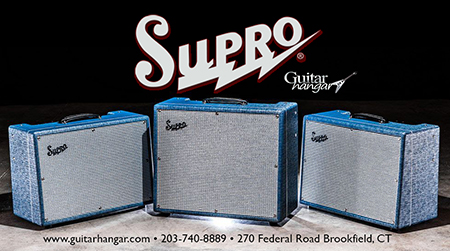

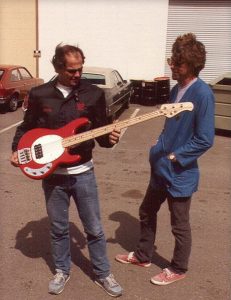



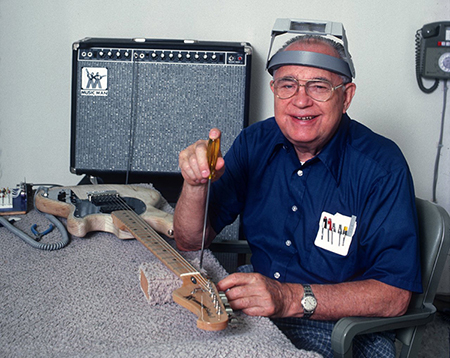



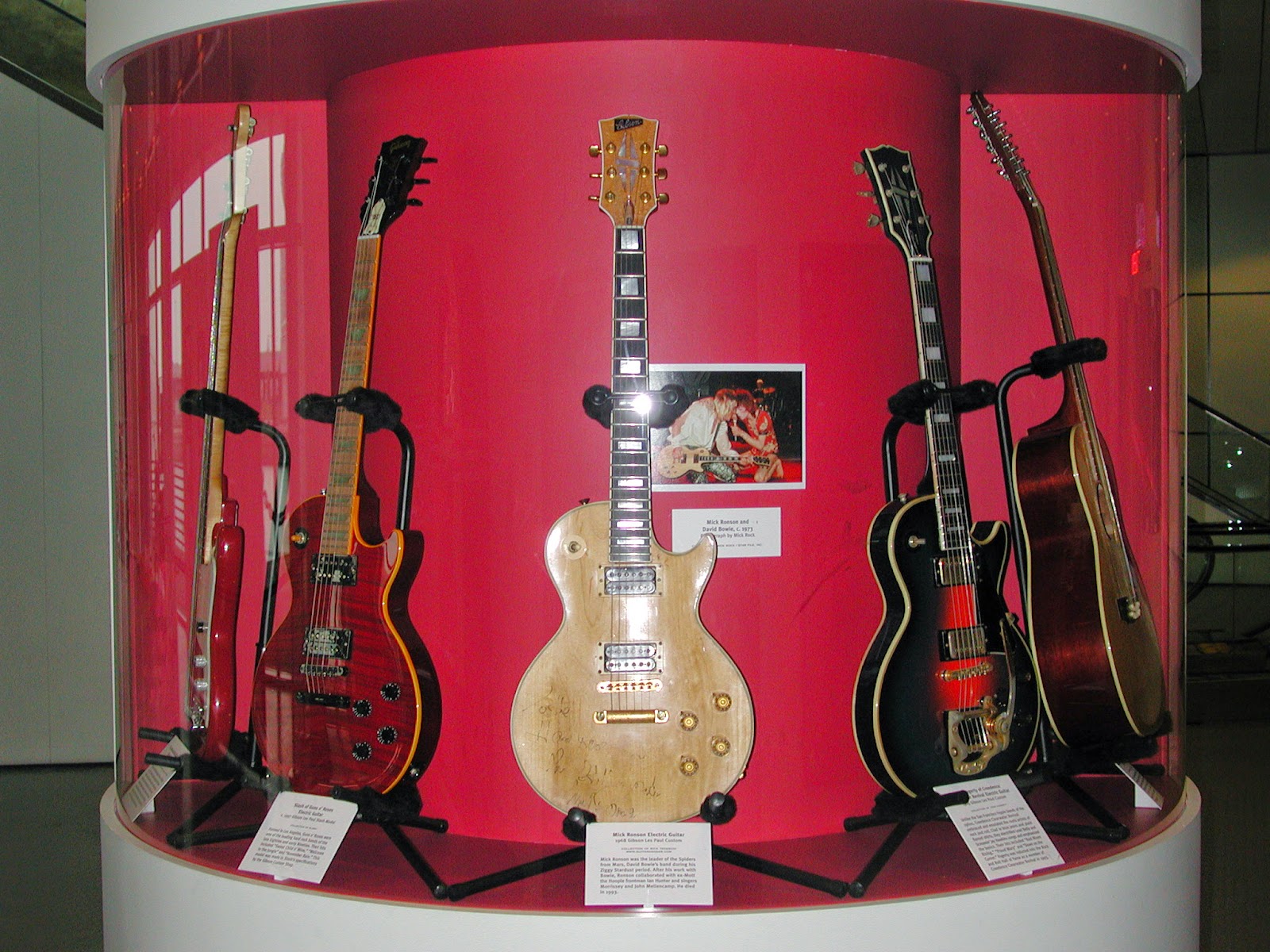















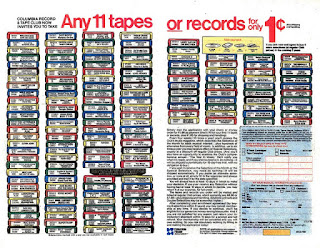
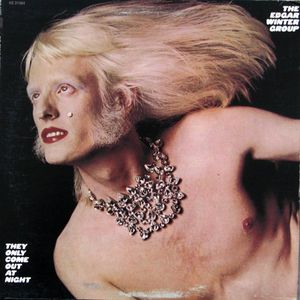





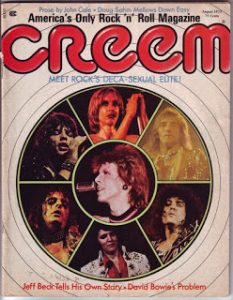
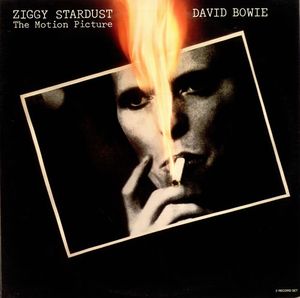
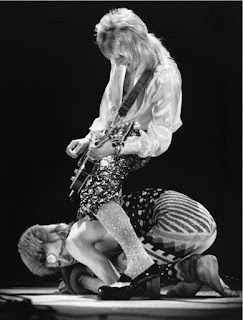
 L to R Tony Visconti, James Stevenson, Rick Tedesco, Ian Hunter, Paul Cuttleford
L to R Tony Visconti, James Stevenson, Rick Tedesco, Ian Hunter, Paul Cuttleford
















